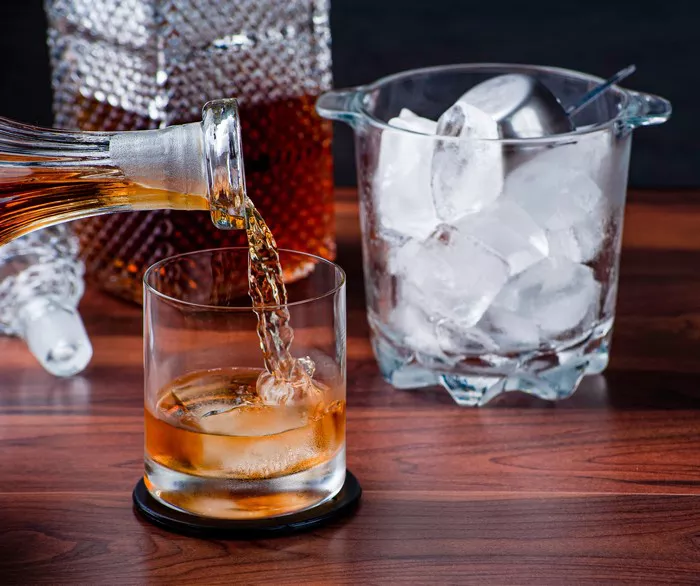Italian grappa, often simply referred to as “grappa,” is a distinctive and centuries-old spirit that embodies the essence of grape distillation. Originating in the picturesque vineyards of Italy, this renowned drink has garnered a loyal following worldwide. In this comprehensive guide, we will explore the world of Italian grappa, delving into its origins, production process, regional variations, and the art of savoring this exceptional spirit.
I. The Origins of Italian Grappa
The story of Italian grappa dates back to the Middle Ages when it emerged as a byproduct of wine production. Grappa’s origins can be traced to Northern Italy, where vineyards and winemaking have been integral to the region’s culture and heritage. Initially, grappa was not crafted with the intent of becoming a standalone spirit; rather, it was born out of the necessity to avoid wastage.
Winemakers, frugal and resourceful, sought to utilize every part of the grape, including the skins, seeds, and stems. These leftover grape pomace, or “vinaccia” in Italian, held the potential for further extraction of flavor and character. Distillation became the solution, giving rise to what we now know as Italian grappa.
II. The Production Process of Italian Grappa
Italian grappa is distinguished by its unique production process, which revolves around the distillation of grape pomace, the solid remains of grapes after they have been pressed for winemaking. The method for crafting this celebrated spirit can be summarized as follows:
Grape Selection: The process begins with the careful selection of grapes, as the grape variety and quality significantly influence the character of the grappa. While various grape varieties can be used, some regions are known for specific types of grapes, such as Nebbiolo in Piedmont or Sangiovese in Tuscany.
Winemaking: Grapes are harvested and processed into wine through traditional winemaking methods. The winemaking process includes crushing, fermentation, and aging, depending on the intended wine product.
Pressing: After winemaking, the remaining grape pomace, consisting of skins, seeds, and pulp, is collected.
Distillation: The grape pomace is transferred to a still, often a copper pot still or a continuous column still, for distillation. During this process, the alcohol content is extracted from the pomace through heating and vaporization.
Heads, Hearts, and Tails: The distillation process separates the initial “heads,” the purest “hearts,” and the end “tails” of the spirit. Only the “hearts” are retained for the final grappa product, while the “heads” and “tails” are typically discarded or redistilled.
Dilution and Bottling: The distilled grappa is often diluted with water to achieve the desired bottling strength, typically around 35% to 45% alcohol by volume (ABV). It is then filtered, often lightly, and bottled for distribution and consumption.
III. Regional Variations of Italian Grappa
Italy is a land of diverse terroirs and grape varieties, and Italian grappa reflects this rich tapestry of flavors. Regional variations of grappa abound, with each area adding its unique twist to this classic spirit. Here are some notable regional variations of Italian grappa:
Piedmont (Piemonte): Piedmont is renowned for its Nebbiolo-based grappa, often made from the pomace of prestigious wines like Barolo and Barbaresco. These grappas are celebrated for their robust and complex flavors.
Veneto: The Veneto region is famous for Amarone and Prosecco grappas. Amarone grappa is crafted from the pomace of Amarone wine, while Prosecco grappa captures the essence of the popular sparkling wine.
Tuscany (Toscana): Tuscany produces grappa from a range of grape varieties, including Sangiovese and Vernaccia. These grappas often exhibit a smooth and refined character.
Friuli-Venezia Giulia: In the northeast, Friuli-Venezia Giulia is known for its elegant and aromatic grappas. The region’s white grape pomace, such as Friulano and Pinot Grigio, is commonly used.
Sicily (Sicilia): Sicilian grappa showcases the island’s unique grape varieties, such as Nero d’Avola and Moscato. These grappas offer a taste of Sicily’s sun-soaked terroir.
Sardinia (Sardegna): Sardinian grappa often features the distinctive Cannonau grape pomace. These grappas are known for their bold and rustic character.
IV. The Flavor Profile of Italian Grappa
Italian grappa is known for its robust and multifaceted flavor profile, which captures the essence of the grape pomace from which it is derived. While grappa can exhibit a wide range of flavors and aromas, some common characteristics include:
Fruit and Floral Notes: Grappa often carries fruity and floral aromas and flavors, reflecting the grape varietal used in its production. These notes can range from the bright and citrusy to the rich and fruity.
Herbal and Spicy Undertones: Depending on the grape variety and distillation method, grappa may feature herbal and spicy undertones, adding complexity to the spirit.
Almond and Nutty Nuances: Some grappas exhibit subtle almond and nutty nuances, contributing to a well-rounded and inviting palate.
Smooth and Lingering Finish: High-quality grappas are celebrated for their smooth and lingering finish, which allows the flavors to unfold gradually.
Clarity and Purity: A hallmark of fine grappa is its clarity and purity. Well-made grappa should be clean and transparent, reflecting the distiller’s skill.
Strength and Balance: Grappa’s alcohol content can vary, but it is typically robust, with an ABV ranging from 35% to 60%. Despite its strength, a well-crafted grappa maintains balance and harmony in its flavor profile.
Conclusion: A Toast to Italian Grappa
Italian grappa, born from centuries-old winemaking traditions and resourcefulness, stands as a testament to the art of distillation and the beauty of utilizing every part of the grape. Its diverse regional variations and multifaceted flavors make it a cherished and celebrated spirit in Italy and beyond.


